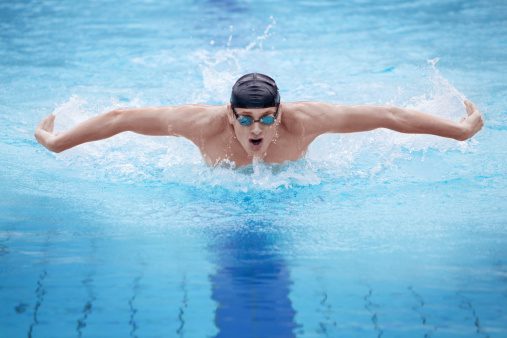Should triathletes learn to swim IM?

Imagine you’re at your noon-hour masters swim program and as you come to the end of the pool, you glance at the board and see that the coach has written an IM set. Do you embrace it and do your best butterfly, or do you swim the whole thing freestyle as that’s the only stroke you know and the one you will use in your next triathlon? Athletes and coaches often debate whether triathletes should stick to freestyle or add other strokes to their workouts. Although swimming is the shortest portion of a triathlon, it’s also the most technical and can be intimidating for some athletes. Small changes can take hours to perfect, especially if an athlete is new to swimming or has poor technique. While swim training has to be predominantly stroke specific, there are strong arguments for being well-rounded. For some athletes, adding other strokes can fulfill a specific purpose and for others it may detract from time spent focusing on other areas of training that can really make a difference. If you are not sure whether alternate swim strokes will enhance your training or not, read on.
IM all the way : Why other strokes can help your triathlon swimming
Posture and Injury prevention: Both backstroke and breaststroke can help to correct posture, particularly rounded shoulders, which can lead to injuries.
Improve range of motion: Breaststroke kick can help open up your hips if they’re tight from cycling and running, butterfly and backstroke can also help with shoulder mobility.
Change of Pace: Freestyle repeated over and over can become boring. Adding other strokes can definitely break up a set to keep the athlete’s attention.
Transfer to freestyle swimming: If done properly butterfly and breaststroke can both help improve the catch phase of your freestyle stroke.
Boost volume: Incorporating other strokes as recovery can allow you to swim longer and improve aerobic conditioning.
Improve swimming power: Becoming a well-rounded swimmer, which includes flip turns, breathing, rotation and all swim strokes, can boost comfort in the water and confidence which can make you a faster, more powerful swimmer.
Stick to Freestyle: Potential drawbacks to adding other strokes
Time is critical: If you only have a few hours a week to swim then you may want to stick to freestyle and maximize the time you have to train. It takes time to learn a new stroke and this might be better spent working on freestyle swimming.
IM can cause an injury if done incorrectly: If you’re a weak freestyle swimmer and have never learned other strokes, I would not recommend adding IM to your training plan. If done incorrectly, butterfly can irritate your shoulders and breaststroke can bug your knees.
Simulating the race: Freestyle is the stroke you’ll use while racing.
You can change things up without other strokes: Freestyle kick without a board, pull with pull-buoy and band, altered breathing patterns, pool pack swimming, open water and mini triathlons are all great tools to change up a set and keep athletes focused.
It’s a matter of opinion and there is no answer that’s right for everyone. These key points may help you decide what’s best for you.
Carolyn Murray is a LifeSport coach and former Olympian. She has coached Triathlon Canada’s Regional Triathlon Centre, and is Canada’s paralympic coach for Rio 2016. Visit her at: lifesportcoaching.com
